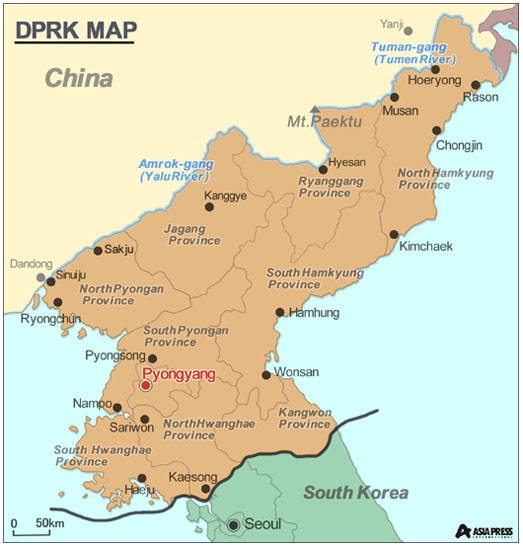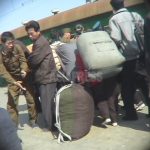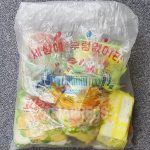◆ Farmers say that the crop yields this year are the worst in 10 years
With the start of summer, the collective farm in North Hamgyung Province decided to exempt members of “food-short households” from working three days a week. These families were allowed to collect medicinal plants and mountain greens from nearby mountainous areas to sell for profit on those days instead.
This effort, however, hasn’t worked out so well this year. Trading companies purchase the medicinal plants and mountain greens, but because trade has been halted with China in all areas except for Sinuiju due to COVID-19, trading companies are not purchasing the greens.
Farmers are going into the mountains to collect deodok (a mountain herb whose roots have restorative properties) and mountain greens to eat as side dishes. With the increase in farmers who are not coming to work, there’s a labor shortage at the farm, which has led to problems in the farm’s operations.
“According to farmers at the collective farm, this year’s production is the worst in the past 10 years. There’s a shortage of fertilizer, lack of labor due to COVID-19, and bad weather, all factors that have combined to create many unripe corn stalks.”
While it may be difficult to gauge how well the entirety of North Korea’s agricultural industry is faring from a survey of a single farm, ASIAPRESS believes that the situation in farms throughout the northern part of North Korea is not much different given that the farms in the region all similar to each other. ASIAPRESS was unable to acquire substantiated information about farms in the two Hwanghae provinces, which serve as North Korea’s breadbasket.
North Korea’s harvest of its major staple, corn, is set to start soon.
※ ASIAPRESS communicates with its reporting partners through Chinese cell phones smuggled into North Korea.

- <Inside N. Korea> Spread of anxiety among N. Koreans due to spiking food prices (1)…White rice has spiked 45%... “No food is entering the markets”…The government’s overzealous efforts are a major reason for the spike
- <Special Feature> Escaping N.Korea…History and Present State(2) Defectors have become a threat to the regime…Around 200 live in Japan ISHIMARU Jiro
- <Special Feature> Escaping N.Korea…History and Present State(1) Kim Jong Un’s war of extermination leads to the end of the defector era ISHIMARU Jiro
- The N. Korean won’s depreciation is not stopping, losing around 40% of its value against the RMB, 68% against the USD compared to early 2022
- <Interview with a N. Korean Woman> "I live with goats and pigs in my apartment" The desperation driving people to raising animals at home

























